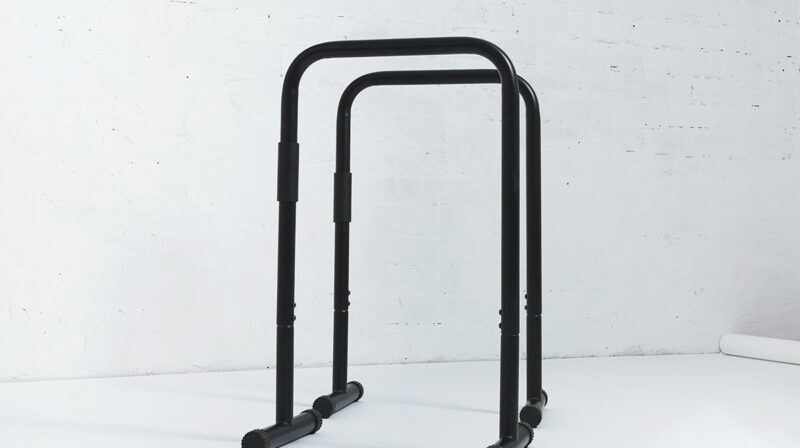Dip bars

Dip bars are two parallel (or slightly slanted) bars used for bodyweight training, primarily targeting the chest, shoulders, and triceps.
Variations of Dip Bars
There are different types of dip bars:
- Home dip bars typically sit on the floor, featuring two rectangular angled pipe connections with wide supports for stability.
- Wall-mounted dip bars are firmly attached to the wall and often come in combination with a pull-up bar.
- Door frame dip bars are usually combined with a pull-up bar for clamping into the door frame.
- A dip station is a larger training device, often with a backrest. In gyms, dip stations sometimes have a counterweight for beginners to perform the exercise more easily.
- Power rack dip bars can be clamped into the rack’s receptacles and removed when not in use. They’re rarely placed on the safety bars of the power rack.
What to Consider when Buying Dip Bars
When purchasing dip bars for home use, consider your training flexibility and available space.
Floor-based dip bars offer the most flexible training, as they typically allow height adjustments and customizable grip distances. Plus, you can easily store them away after use. However, their stability might not be as good as that of dip bars with fixed grip distances.
With all other variations mentioned, grip width is usually not adjustable. However, the slightly slanted bars allow you to choose your grip width by simply adjusting your body position.
Grip diameter is a matter of personal preference. Some dip bars are relatively narrow, which can be uncomfortable for your palms. Others are thicker, which may reduce grip strength.
For wall-mounted and door frame dip bars, ensure the installation is stable. Door frames, in particular, might not always be as sturdy as they appear.
Working out with dip bars
You can perform the following exercise with dip bars.
| Exercise | Main muscle group | Difficulty | Type of training |
| Dips | Upper chest |
Hard |
Compound exercise |